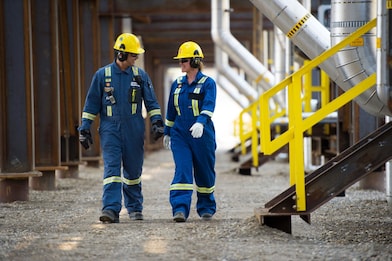高效分配盘
传统的分配盘,甚至先进的泡罩设计都存在汽液分布不均和热分布不良的现象。壳牌催化剂与技术的高效分配盘(HD Tray)优于现有的分配盘技术,以满足日益严格的产品规格要求。显著改善了催化剂床层的润湿性和汽液分布
燃料的发展趋势对加氢处理方法有了更高的要求。壳牌催化剂与技术使用专有的反应器内构件技术装备炼油厂以满足市场趋势的要求。通过减少催化剂失活率、降低反应器入口温度和改善热分布,高效分配盘极大地延长炼油厂运行周期。实际工况研究证明,我们的技术能够提高总生产量,并处理更重质进料。
由于其良好的汽液分配和热分布性能,壳牌高效分配盘的功能与塔顶分配盘和间层分配盘同样出色,可使整个反应器充分地利用催化剂。作为一个夹层分配盘,壳牌高效分配盘与现有设计不同,它不需要深层的惰性瓷球,从而得以有更多的空间装填活性催化剂。在某一个案例中,壳牌高效分配盘为加氢反应器提供了高达30%的催化剂利用率,为加氢裂化反应器提供了高达50%的催化剂利用率。最终,壳牌高效分配盘通过增加活性催化剂体积和近100%的催化剂利用率大大的提升了反应器性能,同时最小化了资本支出和投资成本。

借助我们的顶级高效分配盘满足市场需求
壳牌高效分配盘得益于壳牌催化剂与技术的压力测试设备中的大量实验检测、先进的计算机模拟、以及在客户和壳牌附属炼油厂超过25年的实践经验。
壳牌催化剂与技术的高效分配盘的高性能配置使其可以成为任何加氢处理反应器必不可少的组件,尤其是与其他壳牌反应器内构件,如超平极冷夹层内构件(UFQ)配套使用时。甚至在改造应用中,壳牌高效分配盘也可通过降低初始运行温度、减少催化剂失活并提高运行结束时的加权平均床温提供性能优势。此外,高效分配盘凭借其开停车与清洁的速度加速了催化剂的替换;同时,由于该设计无需在反应器内热作业或使用电动工具,并可提供大型人孔,便于简单快速通过,从而使安全性也得到了进一步的保障。
